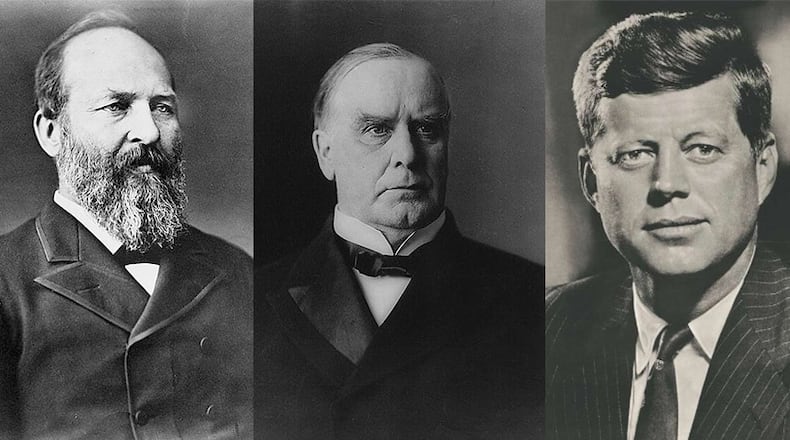The Atlanta Constitution, first published in 1868, was three years too late to cover the April 1865 assassination of President Abraham Lincoln. Thirteen years later, however, the paper broke the sad news of President James A. Garfield’s shooting to Atlantans.
“Washington, July 2 — President Garfield was shot this morning at the Baltimore and Potomac depot while on his way to New England,” the special dispatch to the Constitution began in the Sunday, July 3, 1881, edition. “He received one ball (bullet) in the arm and one between the hip and kidneys. Five physicians are in attendance, and have probed for the ball without success. He is dangerously wounded, but may recover.”
Credit: Library of Congress
Credit: Library of Congress
Charles Guiteau, described in the July 3 Constitution as “a very persistent applicant for consul, which was refused him by the president,” was quickly arrested for the crime.
“(Guiteau) has haunted the executive mansion for two of three weeks,” the dispatch continued, “and his not getting what he wanted, it is believed, resulted in temporary aberration of the mind.”
Garfield lingered over the summer but died of his wounds that September, Constitution readers learned, and Vice President Chester A. Arthur was the new commander in chief. Garfield served as the nation’s 20th president for a little over six months before his death.
Guiteau was sentenced in January 1882 and hanged for the crime in June of that year.
A little over 20 years later, the U.S. suffered its third presidential assassination. In September 1901, when President William McKinley was shot in Buffalo at the Pan-American Exhibition, the Constitution had competition as it worked to keep Atlantans informed about the tragedy.
The Journal, started in 1883, offered local readers even more news on the shooting and death of the president, as well as the resulting arrest, conviction and execution of McKinley’s killer, Leon Czolgosz, an anarchist who viewed the president as an enemy of workers. The day after the crime, amid all the reports on McKinley’s condition, Journal readers learned details of the alleged gunman’s first hours behind bars.
Credit: Library of Congress
Credit: Library of Congress
“Czolgosz, the man who shot the president, slept in comfort after his crime. He was locked up at No. 1 police station and after he had been interviewed by the officers of the law a watch of two men was placed over him. He went to his bunk early and was soon asleep. He seemed without regret and undisturbed by the prospect of punishment for his crime.” Czolgosz was electrocuted early on the morning of Oct. 29, 1901, at New York’s Auburn Prison.
“I am not sorry for the crime,” were his reported last words, according to the Journal front-page story that evening.
Credit: Keystone
Credit: Keystone
>> AJC DEJA NEWS: Check out what we’ve covered before (and again)
Fast forward 62 years and President John F. Kennedy’s November 1963 assassination in Dallas marked a turning point in how readers consumed news. For the first time, television asserted its immediacy in both covering and disseminating breaking news, bringing developments to viewers as events unfolded.
Lee Harvey Oswald, “a onetime U.S. Marine and now a pro-Castro Marxist,” a Nov. 23 Constitution report stated, was captured less than four miles from the assassination site in downtown Dallas. “The 24-year-old onetime defector to Russia,” the story continued, maintained his innocence.
Oswald’s stunning shooting and death hit newsstands Monday, and readers took in the strange juxtaposition of the alleged killer’s own murder in the Dallas Police headquarters basement by gunman Jack Ruby side by side with presidential funeral news. The Journal and Constitution offered local angles, unseen on the national TV networks, as Atlantans and Georgians mourned Kennedy.
“At Christ the King Roman Catholic Church,” the Constitution’s Jim Bentley wrote in the Nov. 25 extra edition, “even the early masses were heavily attended. The priest told the communicants that (the president) had become, in a sense, martyred for his beliefs. The church was somber, hung with new black drapes of mourning.
“The priest (also requested) prayers for Oswald.”
ABOUT DEJA NEWS
In this series, we scour the AJC archives for the most interesting news from days gone by, show you original articles and update the story. If you have a story you’d like researched and featured in AJC Deja News, send an email with as much information as you know.
About the Author
Keep Reading
The Latest
Featured





